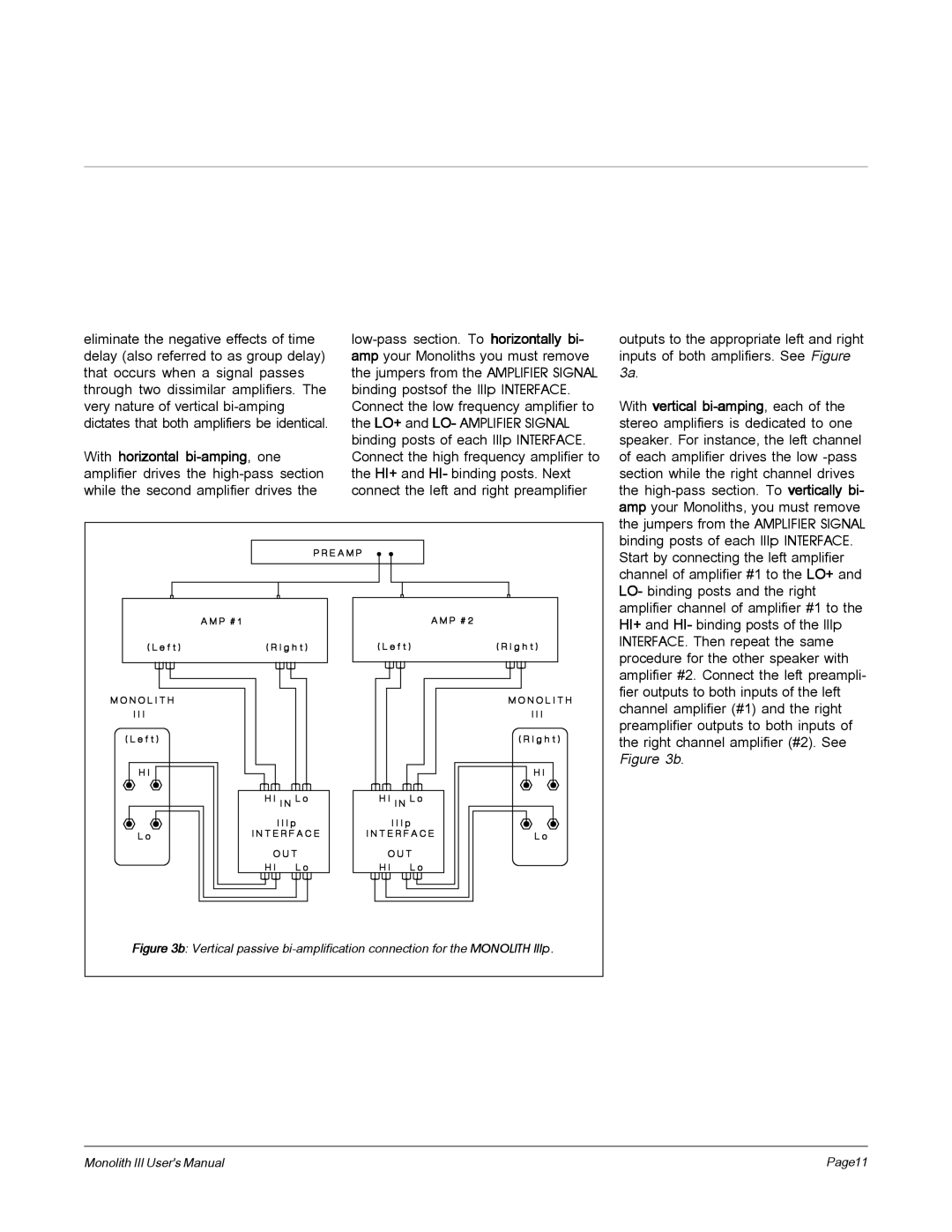
eliminate the negative effects of time delay (also referred to as group delay) that occurs when a signal passes through two dissimilar amplifiers. The very nature of vertical bi-amping dictates that both amplifiers be identical.
With horizontal bi-amping, one amplifier drives the high-pass section while the second amplifier drives the
low-pass section. To horizontally bi- amp your Monoliths you must remove the jumpers from the AMPLIFIER SIGNAL binding postsof the IIIp INTERFACE. Connect the low frequency amplifier to the LO+ and LO- AMPLIFIER SIGNAL binding posts of each IIIp INTERFACE. Connect the high frequency amplifier to the HI+ and HI- binding posts. Next connect the left and right preamplifier
outputs to the appropriate left and right inputs of both amplifiers. See Figure 3a.
With vertical bi-amping, each of the stereo amplifiers is dedicated to one speaker. For instance, the left channel of each amplifier drives the low -pass section while the right channel drives the high-pass section. To vertically bi- amp your Monoliths, you must remove the jumpers from the AMPLIFIER SIGNAL binding posts of each IIIp INTERFACE. Start by connecting the left amplifier channel of amplifier #1 to the LO+ and LO- binding posts and the right amplifier channel of amplifier #1 to the HI+ and HI- binding posts of the IIIp INTERFACE. Then repeat the same procedure for the other speaker with amplifier #2. Connect the left preampli- fier outputs to both inputs of the left channel amplifier (#1) and the right preamplifier outputs to both inputs of the right channel amplifier (#2). See Figure 3b.
Figure 3b: Vertical passive bi-amplification connection for the MONOLITH IIIp.
Monolith III User's Manual | Page11 |

